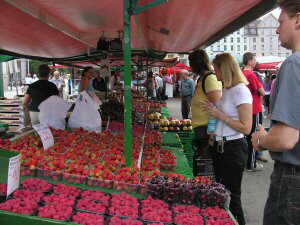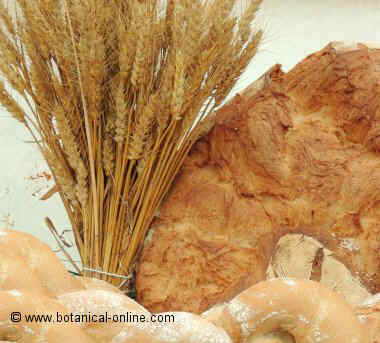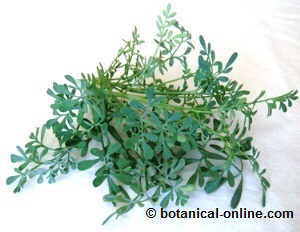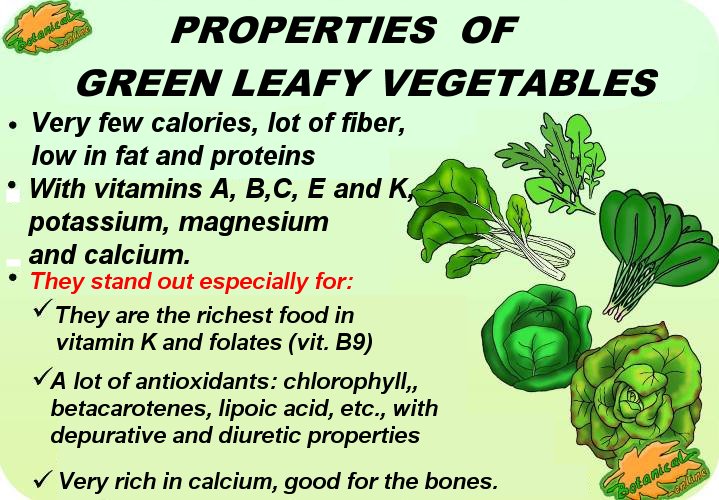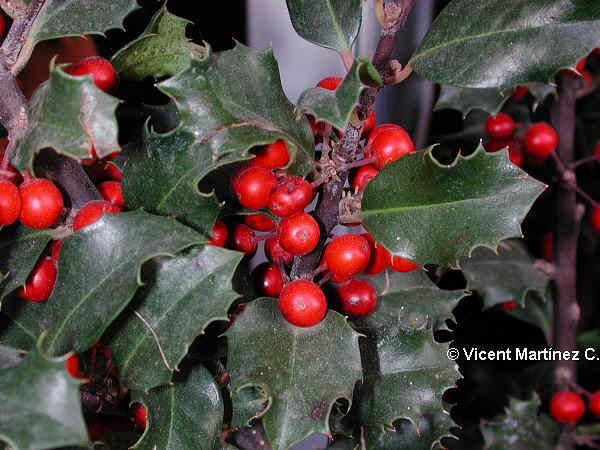Contents
Characteristics of date palms
Dates are the fruits of date palm (Phoenix dactylifera) a palm tree belonging to the Arecaceae family that can reach 30 meters in height.
Date palms grow naturally in North Africa.
They can be seen in great abundance in Arabia, Morocco, Tunisia, Algeria, Syria, Iraq and Palestine, but they also appear cultivated in many regions of warm climate. Its expansion area extending from the Canary Islands to India.
Description of date palm
Date stem is characterized by its thick bark where the marks of the old leaves persist.
The leaves or fronds are green with gray tones, have long petioles covered with spikes on the base. They can reach 5 meters in length.
Date flowers are small and yellow.
Date fruits are oblong edible berries, called dates, that can reach 4 cm in length. They appear in clusters hanging below large pinnate leaves.
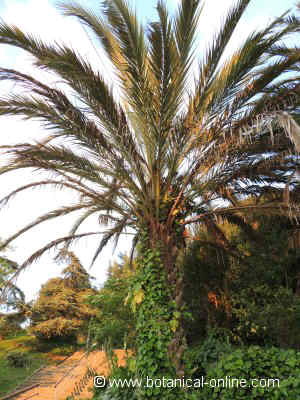
Photo of date palm
Date palms production
To produce dates, female palm trees need male specimens in the vicinity. When cultivated, they are usually artificially pollinated (male inflorescences are cut and hung in the center of the female inflorescences)
The dates can only grow in warm climates. Hot and humid climates yield low-quality dates.
The female palms produce a very high amount of fruits. Some of them can provide more than 200 kilos a year. There are bunches of dates that can weigh over 12 kilos. The main producers of dates in the world are Saudi Arabia, (the emblem of this country contains a palm tree) Iran, Egypt and Iraq. Tunisia and Algeria export a lot to Europe.
The date palm has adapted well in America after having been exported in the nineteenth century by the Spanish colonizers. There are large fields planted in Mexico and California.
Spain is the most northerly date producer. The ” Palmeral of Elche” (= the palm tree orchard of Elche) in the province of Alicante (Spain) is very-well known. It dates from the Arab colonization, when the city was surrounded by many date palms. In this way, palm trees could benefit an area where rainfall was very scarce.
This plantation hat its moment of maximum splendor in the eighteenth century when it contained more than 200,000 samples. In fact, it is the largest in Europe and has been named World Heritage by UNESCO. It has become a place of great importance for tourism, as well as it provides a good harvest of dates and the raw material for making the decorations of the Palm Sunday procession.
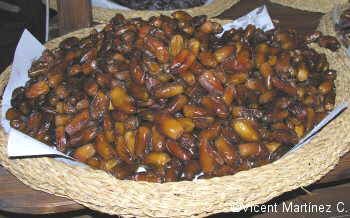
Photo of dates
Origin of dates
Dates are very important to desert dwellers since they have been and they still are a major source of food and wealth at the areas having a source of water.
Archaeological remains show that this tree has been used for 5000 years because dates stones have been found in the excavations of primitive caves.
The first crops probably take place some 3000 years ago (Assyrian inscriptions show how this people pollinated the trees artificially). t
The date palm frequently appears in the Bible and it also serves as a decoration in Egyptian tombs.
Uses of date palms
It should be noted that date palms do not only provide fruits. The date palm is one of the plants with more applications:
- Its wood is used in construction, for firewood and for making baskets.
- The leaf buds located at the top are edible.
- A drink is made from its sap.
- Date palms, apart from being eaten as a fruit, can produce alcohol, syrup and vinegar.
- The seeds are ground to feed the camels.
- The fiber is used for making ropes.
- The date palms are also used for ornamental purposes in many parts of the world, so they can be seen in many parks and gardens.
Types of date palms
The main types of date palms are:
- Date palm (Phoenix dactylifera): It is the species used to obtain dates. After a selection process, hundreds of varieties of this palm species have been obtained, each one of them producing dates with a peculiar texture, shape and taste.
- Canary island date palm (Phoenix canariensis): It is smaller than date palm as it only reaches 15 m height. Its leaves are darker green and it has a stronger and wider trunk. Its yelloworange fruits remind us acorns without the caps. they are not edible.
- Indian wild date palm (Phoenix sylvestris): From this tree people in India get palm wine, gar, which is a type of sugar, and arrack (a liquor that is obtained from wine produced from this plant)
- Senegal date palm (Phoenix reclinata): It is smaller than the previous date palms since it is only about 9 m high. Used as an ornamental plant because of its unique sloping trunks that tend to grow together in groups. The fruits are small and, although edible, they contain very little meat, plenty of bone and tasteless, reason why they is not used for this purpose.
- Pygmy date palm or Miniature date palm (Phoenix roebelenii). Coming from the tropical forests of Burma and Thailand, it is one of the smaller palms, as it only reaches a maximum of 3 m. The fruit are like small black colored eggs. It is a plant used in landscaping, but it is very dangerous because the lower leaves have develop very sharp thorns up to 8 cm in length. The contact with them is very painful and can cause infections very easily.
![]() More information about dates.
More information about dates.


